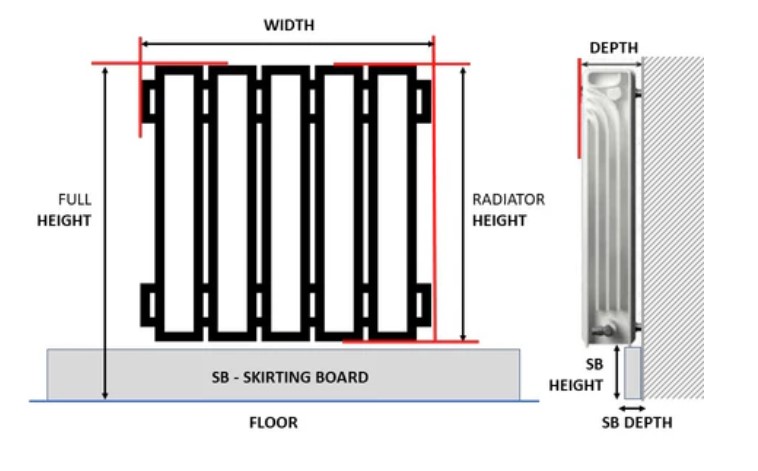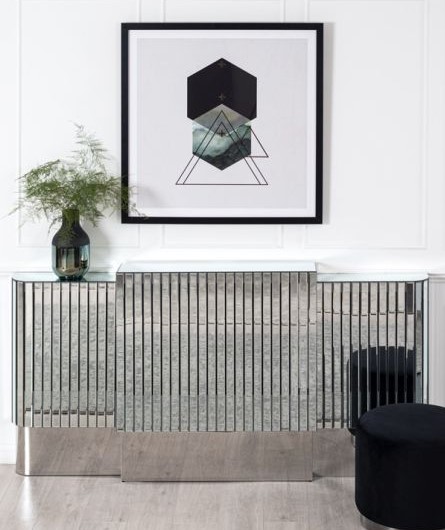Radiator covers offer a practical and stylish way to conceal unsightly radiators while enhancing a room’s aesthetic appeal. However, to ensure a perfect fit, accurate measurements must be taken before purchasing or installing a cover.
Radiator covers not only improve the appearance of a space but also provide additional safety benefits, especially in homes with young children or pets. By enclosing the radiator, covers can help prevent accidental burns and protect curious fingers from hot surfaces.
This guide will walk you through the step-by-step process of measuring for a radiator cover in the UK, considering various factors and providing helpful tips.
Why Proper Measurement is Important
A radiator cover that fits well can transform a room, adding a stylish touch while protecting children and pets from hot surfaces. Additionally, a well-fitted cover can improve heating efficiency by directing warm air into the room rather than allowing it to rise directly to the ceiling.
However, if the measurements are off, the cover may look awkward, block heat, or even damage the radiator. That’s why taking accurate measurements is crucial.
Tools Needed for Measuring
Before you start, gather the necessary tools to make the measuring process easier and more accurate:
- Tape Measure: A flexible, retractable tape measure is ideal for measuring various lengths and widths.
- Pencil and Paper: For jotting down measurements and notes.
- Spirit Level: Ensures that your radiator is level, which is important for accuracy.
- Optional Tools:
- Laser Distance Measurer: Provides precise digital measurements, especially useful for tricky angles or hard-to-reach areas.
Step-by-Step Guide to Measuring for a Radiator Cover
To ensure a perfect fit, you need to measure three key dimensions: the width, height, and depth of your radiator. Follow these steps carefully to obtain accurate measurements:
1. Measure the Width
Start by measuring the total width of your radiator, including any valves or pipework that protrude from the sides. Here’s how:
- Place the tape measure at the farthest edge of one side of the radiator, extending it to the opposite edge.
- Make sure to include the valves in your measurement, as they add to the overall width.
- Record the measurement.
- Add Extra Clearance: To ensure proper ventilation and a good fit, add an additional 5-10 cm (2-4 inches) to the total width. This extra space allows heat to circulate effectively and prevents the cover from resting directly against the radiator.
2. Measure the Height
Next, measure the height of your radiator from the floor to the top of the radiator.
- Position the tape measure at the base of the radiator, where it meets the floor or skirting board.
- Extend the tape measure to the top edge of the radiator.
- If your radiator sits on feet or has additional fittings, include them in your height measurement.
- Consider Clearance for Skirting Boards: If you have skirting boards, measure the height from the top of the skirting board to the top of the radiator. Depending on your radiator cover design, you might need to add extra clearance to accommodate the skirting board height.
3. Measure the Depth
The depth of the radiator is the distance it protrudes from the wall. Accurate depth measurement ensures the cover has enough space to fit over the radiator without being too tight or too loose.
- Place the tape measure flat against the wall and extend it to the frontmost part of the radiator.
- Include any pipework, valves, or other protrusions in your measurement.
- Add Extra Depth: Add around 2-5 cm (1-2 inches) to the depth measurement to allow for air circulation and prevent the cover from being too close to the radiator.
4. Consider Obstructions
It’s important to consider any potential obstructions around the radiator that may affect the fit of the cover. These could include:
- Windowsills: If your radiator is positioned below a windowsill, measure the distance from the top of the radiator to the bottom of the sill. Ensure there is enough clearance for the cover to fit without blocking the sill.
- Sockets or Switches: Note any electrical outlets or switches nearby. Measure their distance from the radiator to determine if they will be covered or obstructed.
- Furniture or Other Fixtures: Check for any furniture, cabinets, or other fixtures that might affect the placement of the radiator cover.
If there are any obstructions, you may need to consider a custom-made radiator cover that accommodates these elements.

vvImage source: radiatorcoversshop.com
Common Mistakes to Avoid When Measuring
When measuring for a radiator cover, avoid these common mistakes to ensure a perfect fit:
- Ignoring the Valves and Pipework: Radiators are often wider than they appear due to the valves and pipework at each end. Always include these in your measurements.
- Not Considering Obstructions: Overlooking nearby obstructions, such as windowsills or sockets, can lead to an ill-fitting cover.
- Failing to Add Extra Clearance: Adding sufficient clearance to your measurements is essential for proper ventilation and ease of installation. A cover that’s too tight may trap heat and reduce efficiency.
- Assuming All Radiators Are Standard Size: Radiators come in a variety of sizes, so don’t assume that your radiator will fit a standard-sized cover. Always measure before purchasing.
Different Types of Radiator Covers and Their Measurement Requirements
Radiator covers come in various styles, each with its own measurement considerations:
- Traditional Radiator Covers: Typically feature decorative grilles and wooden frames. Ensure you measure for adequate clearance to accommodate the cover’s design.
- Modern Radiator Covers: Often have sleeker, minimalistic designs. Pay attention to the cover’s depth and height, as modern designs may have a tighter fit.
- Custom-Built Radiator Covers: If you have a unique radiator size or specific aesthetic requirements, a custom-built cover might be the best option. Measure all dimensions carefully and consider any additional features you want, such as shelving or integrated storage.

Image source: my-furniture.com
Professional vs. DIY Measuring: Which is Best for You?
When deciding whether to measure for a radiator cover yourself or hire a professional, consider the following:
- DIY Measuring:
- Pros: Cost-effective, immediate results, no need to wait for a professional appointment.
- Cons: Risk of errors if not measured accurately, potential for multiple purchases if measurements are incorrect.
- Hiring a Professional:
- Pros: Professional precision, advice on cover styles and materials, peace of mind knowing the job is done correctly.
- Cons: Additional cost, scheduling considerations.
If you feel confident in your measuring skills and have a standard radiator, DIY measuring is a viable option. However, if you have an unusual radiator size or prefer expert advice, hiring a professional is worth considering.
Conclusion
Accurate measurement is the key to finding the perfect radiator cover for your home. By following these simple steps and avoiding common mistakes, you can ensure that your radiator cover fits well, looks great, and functions effectively. Remember to always consider extra clearance for ventilation, account for any obstructions, and choose a cover style that complements your home’s interior.
Looking for more tips on home improvement? Check out our related guides or explore our selection of radiator covers available in the UK!
Frequently Asked Questions (FAQs)
To measure for a radiator cover, measure the width, height, and depth of your radiator. Include any valves and pipework in your measurements. Add 5-10 cm (2-4 inches) to the width and 2-5 cm (1-2 inches) to the depth for proper ventilation and a good fit.
A radiator cover should be 5-10 cm (2-4 inches) wider and 2-5 cm (1-2 inches) deeper than the radiator to ensure adequate ventilation and easy installation.
To measure your radiator size, measure its width (including valves), height (from the floor to the top), and depth (from the wall to the front of the radiator). Note down all measurements and add extra space for ventilation.
Standard radiator cover sizes typically range from 78 cm to 152 cm (31-60 inches) in width, 81 cm to 112 cm (32-44 inches) in height, and 15 cm to 20 cm (6-8 inches) in depth. However, sizes can vary, so always measure your radiator before purchasing.
